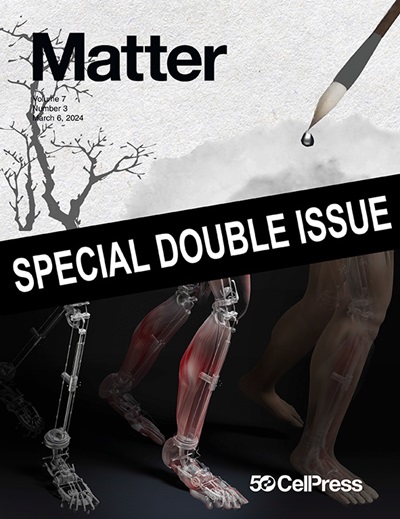Nucleation effects of coccoliths in portland cement
IF 17.5
1区 材料科学
Q1 MATERIALS SCIENCE, MULTIDISCIPLINARY
引用次数: 0
Abstract
This work explores the use of photosynthesized coccoliths (intricate CaCO3 particles) as a nucleation agent or cement replacement in portland cement paste. First, coccoliths were produced and harvested from the marine microalgae Emiliania huxleyi and the particle size, morphology, and mineralogy were characterized. Then, the nucleation effects of E. huxleyi coccoliths as seeding agent (0.5, 1, 3, or 5 wt % additions) and limestone filler (5 and 15 wt % cement replacements) were studied using isothermal conduction calorimetry and compressive strength testing. The results were compared with five commercially available CaCO3 sources used as nucleation agents and fillers. While the high surface area of coccoliths (12.22 m2/g) enhanced water demand, it also enhanced nucleation during cement hydration without accelerating hydration, leading to enhanced early-age strength without detriments to 28-day strength. Results highlight a potential carbon reduction strategy, namely employing photosynthesis as a method of mineral admixture production, for the cement and concrete industry.


硅酸盐水泥中球粒的成核效应
这项研究探讨了在波特兰水泥浆中使用光合作用产生的茧石(错综复杂的 CaCO3 颗粒)作为成核剂或水泥替代物的问题。首先,从海洋微藻 Emiliania huxleyi 中生产和收获了茧石,并对其粒径、形态和矿物学进行了表征。然后,使用等温传导量热法和抗压强度测试研究了作为种子剂(添加量为 0.5、1、3 或 5 wt %)和石灰石填料(5 和 15 wt % 水泥替代物)的 Emiliania huxleyi 茧石的成核效应。研究结果与用作成核剂和填料的五种市售 CaCO3 来源进行了比较。虽然椰壳的高表面积(12.22 m2/g)提高了需水量,但它也增强了水泥水化过程中的成核作用,而不会加速水化,从而提高了早期强度,但不会影响 28 天强度。研究结果凸显了一种潜在的减碳战略,即利用光合作用作为水泥和混凝土行业生产矿物掺合料的一种方法。
本文章由计算机程序翻译,如有差异,请以英文原文为准。
求助全文
约1分钟内获得全文
求助全文
来源期刊

Matter
MATERIALS SCIENCE, MULTIDISCIPLINARY-
CiteScore
26.30
自引率
2.60%
发文量
367
期刊介绍:
Matter, a monthly journal affiliated with Cell, spans the broad field of materials science from nano to macro levels,covering fundamentals to applications. Embracing groundbreaking technologies,it includes full-length research articles,reviews, perspectives,previews, opinions, personnel stories, and general editorial content.
Matter aims to be the primary resource for researchers in academia and industry, inspiring the next generation of materials scientists.
 求助内容:
求助内容: 应助结果提醒方式:
应助结果提醒方式:


